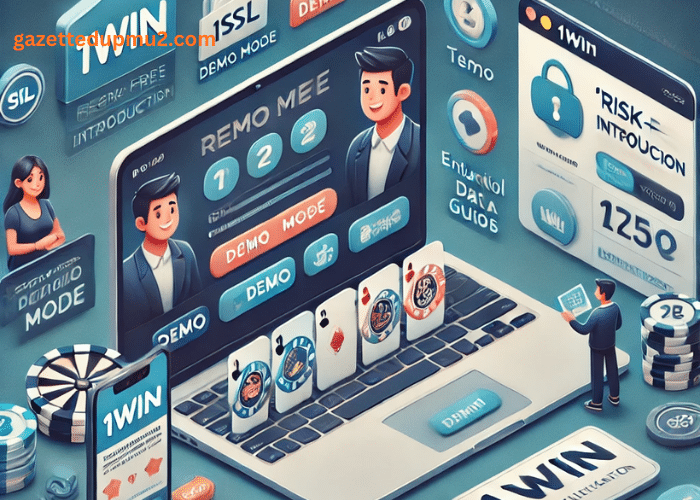Innovation has always been a driving force behind the success of businesses. Throughout history, companies that have dared to push the boundaries of convention and embrace change have often emerged as industry leaders. Today, in an era defined by rapid technological advancement and evolving consumer preferences, innovation isn’t just a luxury but a necessity. It’s not enough to merely introduce new products or services; true success lies in transforming the very core of business models to adapt and thrive in an ever-changing landscape.
The Changing Business Landscape
The business landscape has undergone significant transformation in recent years. Globalization, digitalization, and the rise of the information age have created a highly interconnected and fast-paced world. This new environment has brought both opportunities and challenges to businesses of all sizes and industries.
Consumer expectations are continually evolving. In the age of instant gratification, customers demand personalized experiences, convenience, and speed. The Internet and social media have given them a platform to voice their opinions, making reputation management more critical than ever.
Additionally, competition is fiercer than ever before. Startups and disruptors are challenging established players, often with leaner structures and innovative approaches. As a result, traditional businesses must find ways to adapt or risk becoming obsolete.
The Role of Business Models
At the heart of every successful business lies its business model. A business model is a blueprint that outlines how an organization creates, delivers, and captures value. It defines the core elements of a company’s strategy, from its target customer segments to its revenue streams.
Innovation at the core of a business model means reimagining these fundamental components to stay relevant and competitive. It’s about challenging long-held assumptions and finding new ways to create value for both customers and the organization itself.
The Necessity of Business Model Innovation
Why is business model innovation so crucial today? The reasons are manifold:
Rapid Technological Advancements
Technology is advancing at an unprecedented pace. From artificial intelligence and machine learning to blockchain and the Internet of Things, these technologies are reshaping industries. Companies that don’t integrate these innovations into their business models risk falling behind.
Changing Consumer Behavior
Consumer behavior is continually shifting, driven by changing demographics, cultural trends, and technological advancements. Businesses must adapt their models to meet these changing preferences and expectations.
Competitive Pressure
New entrants and agile startups often enter markets with innovative business models that disrupt established players. To stay competitive, organizations must be open to radical changes in how they operate.
Environmental and Societal Concerns
Increasing environmental and societal concerns are prompting businesses to rethink their practices. Sustainable business models are becoming more important as consumers and investors alike prioritize ethical and environmentally friendly choices.
Case Studies in Business Model Innovation
To understand the power of business model innovation, let’s look at a few case studies that demonstrate how companies have revitalized their core and achieved success.
Netflix: From DVDs to Streaming
Once a DVD rental-by-mail company, Netflix underwent a radical transformation by shifting to a streaming-based business model. This move allowed them to adapt to changing consumer preferences, making content available instantly over the internet. By doing so, they disrupted the traditional cable and broadcast TV industries and became a global entertainment powerhouse.
Apple: Beyond Hardware
Apple’s initial business model was primarily focused on selling hardware like Macintosh computers. However, they pivoted to a broader ecosystem model, incorporating services like iTunes, the App Store, and iCloud. This shift transformed Apple into a company that not only sells devices but also provides a comprehensive digital ecosystem for its customers.
Amazon: The Everything Store
Amazon started as an online bookstore but quickly expanded its business model to become the world’s largest online retailer. Their relentless focus on customer experience, coupled with innovative logistics and the introduction of Amazon Web Services (AWS), turned Amazon into a multifaceted tech giant.
Tesla: Electric Mobility
Tesla’s innovation goes beyond electric vehicles. Their business model encompasses software updates, self-driving technology, and energy storage solutions. By creating a holistic electric mobility ecosystem, they have revolutionized the automotive industry.
Airbnb: Sharing Economy
Airbnb disrupted the hospitality industry by introducing the sharing economy model. Instead of traditional hotels, it allows people to rent out their homes or spare rooms to travelers. This peer-to-peer model created a new way of experiencing travel and accommodations.
These case studies illustrate how companies have successfully innovated at their core, often by challenging conventional norms and thinking outside the box. They prove that business model innovation isn’t reserved for startups; established companies can also embrace change and stay competitive.
The Process of Business Model Innovation
So, how can a company go about innovating its business model? It’s not a one-size-fits-all process, but here are some key steps to get started:
Understand Your Current Model
Begin by thoroughly analyzing your existing business model. Identify its strengths, weaknesses, and areas that require improvement. This self-assessment provides a foundation for change.
Identify Emerging Trends
Stay informed about industry trends and emerging technologies. Look for opportunities to leverage these trends to create new value for your customers or streamline your operations.
Empathize with Customers
Engage with your customers to understand their evolving needs and pain points. Use techniques like surveys, focus groups, and user testing to gain insights into their preferences and behaviors.
Brainstorm and Experiment
Gather a diverse team and encourage them to brainstorm innovative ideas for your business model. Don’t be afraid to experiment with new concepts and approaches. Embrace a culture of experimentation.
Prototype and Test
Once you have potential ideas, create prototypes or minimum viable products (MVPs) to test them in the real world. Gather feedback and iterate on your concepts based on what you learn.
Evaluate Risks and Rewards
Assess the risks and rewards associated with each potential innovation. Understand the financial implications, market dynamics, and competitive landscape before committing to a new model.
Implement and Scale
Once you’ve validated your new model, begin the process of implementation. Start small, learn from the initial rollout, and then scale your innovation as appropriate.
Monitor and Adapt
Continuously monitor the performance of your new model. Be prepared to adapt and refine it as needed to stay aligned with changing market conditions and customer preferences.
Cultivate an Innovation Culture
Foster a culture of innovation within your organization. Encourage employees at all levels to contribute ideas and be open to change. Innovation should be an ongoing process, not a one-time event.
Overcoming Challenges in Business Model Innovation
While business model innovation can yield significant rewards, it’s not without its challenges. Here are some common obstacles and strategies for overcoming them:
Resistance to Change
Employees and stakeholders may resist changes to the established business model. To address this, communicate the reasons for the change clearly, involve key stakeholders in the process, and provide training and support as needed.
Lack of Resources
Innovation requires resources, both financial and human. To overcome this challenge, allocate a budget for innovation initiatives and ensure that employees have the time and tools they need to innovate.





